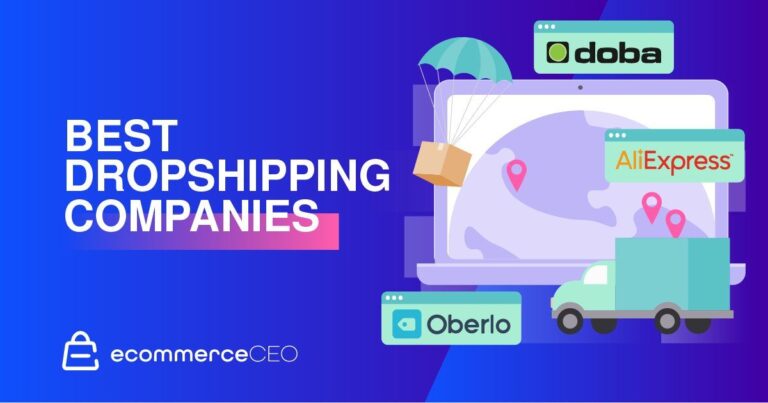
During ChannelAdvisor Connect 2021, the exclusive global gathering of forward-thinking e-commerce and marketing professionals held September 14-15, Senior Product Marketing Manager Greg Ives and Product Marketing Manager Bradley Hearn presented Consumer-Centric Strategies for a Successful Q4, a session that highlighted the consumer journey and its multifaceted role in e-commerce.
In the presentation, they shared several statistics from ChannelAdvisor’s recent consumer survey that yielded insights into the various stages consumers walk through before completing a purchase. The research also indicated consumers are shopping online more frequently than ever before. Fifty percent of consumers are shopping online more frequently now than they did before the pandemic began.
And more online shopping means more online holiday shopping. Last year, holiday e-commerce activity soared as shoppers continued to pursue their annual holiday shopping habits but shifted in greater numbers to online activity. This year, 35% of consumers expect to conduct even more holiday shopping online than they did in 2020. E-commerce activity is still on the rise.
Tackling the Challenges
In the session, Ives and Hearn also presented evidence that buyers are researching and purchasing on more channels than in previous years. Amazon and Google remain top locations for research, but other marketplaces, brand websites or retail sites and social media sites also are frequently visited locations where consumer research activity takes place. As far as purchasing locations, Amazon remains a major player, but Google slips a bit as users migrate to other marketplaces or retail sites to complete their purchases. This fragmented, multichannel approach can pose a major challenge to brands and retailers in connecting with their consumers.
However, instead of reorganizing strategies based on channel, Ives and Hearn encourage sellers to use consumer intent as the focal point upon which each business can develop tactical methodology and enhance individual opportunities for engagement.
“While everyone’s path to purchase is different, their buyer intent is the same,” Ives said. “It might take them minutes or it could take them weeks or months. But they go through the same linear thought process every time.”
Both Ives and Hearn emphasized no one-size-fits-all approach exists — too many variables are in play, from product type to individual consumer demographics. However, consumer intent provides an inroad to more deeply understand, engage with and build strategies to connect to your consumers.
Understanding the Consumer Journey
During the session, Ives and Hearn briefly walked through the five stages of the consumer journey: awareness, consideration, motivation, conversion and loyalty. They discussed best practices throughout and also offered holiday-specific tips in each stage for sellers.
Awareness
Statistics show that consumers discover products through a variety of options. And several of the results in ChannelAdvisor’s recent consumer survey indicate that strategic advertising does work.
Ives and Hearn broke this stage down into two different categories: pre-awareness and product awareness. In the first category, the consumer does not yet know about the product and may not even be aware of their own desire for the product. However, through social presence, effective advertising, promotions or strategic product placement, the consumer begins to form an awareness of the product or the brand. In product awareness, consumers may be aware of a general need or desire for an item but haven’t selected a specific product yet.
Hearn encourages brands and retailers to think about the different actions shoppers tend to execute in this stage, depending on individual circumstances and preferences, during the holiday season: filtering, browsing and searching. Monitor your efforts in these areas and make adjustments based on performance through Q4.
Consideration
At this stage, Ives insists you must give all information possible to consumers to allow them to begin to make a decision.
As consumers begin to more seriously consider your product, it’s essential to provide optimized, robust information in the product detail pages. Also, because shipping costs and timing play major roles in a consumer’s decision, clear and well-placed communication regarding shipping times and policies can also boost consumer’s confidence in purchasing your product.
For the holidays, take advantage of any special programs or targeted messaging that can bring critical product details to the forefront.
“If you’re a brand selling on Amazon, you should be leveraging A+ Content,” Hearn said. “Obviously, by providing enhanced content, you’re more likely to get higher conversion, increase traffic, increase sales.”
Motivation
This stage is the make-or-break moment of the consumer journey. As the potential buyer moves from considering your product to making a decision, a few points can help them decide to take those final clicks to complete a transaction. Pricing, promotions, low stock notifications and cart reminders can prompt choices to move forward in the purchasing process.
And even after the consumer has left your site, the opportunity to continue the consumer journey remains. Remember, some consumers may take weeks or months to make a final decision, depending on product type and price point. Retargeting ads and cart abandonment emails can be sent to consumers who showed interest in your products. How can you tell if they might be interested in your product or brand? Uninterested consumers are likely to have left your site within seconds. Interested consumers click through several pages, perhaps drilling down into product details or checking out any “About Us” or company bio information available.
Conversion
At this point, consumers have made up their minds and are ready to buy. However, a poor checkout experience can break trust and send them to your competitors instead.
“Limit the number of clicks and hassle,” Hearn emphasized.
Important points to pay attention to include security and shipping. Marketplaces typically provide predictable, trustworthy steps throughout checkout that the consumer has come to expect. If you’re operating your own dot-com, be sure it’s able to offer the same smooth process.
Also, avoid surprising the buyer with unexpected delivery costs or extended shipping times during this stage. Give as many choices in delivery as possible, because consumers are exercising their ability to select the fastest, most convenient option for them. For example, 44% of US consumers plan to use options to buy online, pick up in store or curbside this holiday season.
Loyalty
When it comes to that final, elusive stage of the consumer journey — one that does not happen for every purchase — clear, healthy communication is essential.
To create those connections through which loyalty is nourished, all messaging must be gracious, responsive, friendly and approachable. All of it. That includes responses to complaints, returns, feedback, inquiries and more.
“Study after study — you’ve heard it before — shows how much cheaper it is to retain a past customer than it is to gain a new customer,” Hearn said. “It’s worth the effort to try to retain and build that loyalty.”
For the holidays, one key communication point will resonate strongly with consumers: the last day you can ship a product to guarantee arrival prior to key gift-giving dates such as Christmas. Know and repeatedly state your “last ship” date — in the product details page, in the shipping options, prior to checkout.
Have you spent time thinking about what the consumer journey might look like for your products? Do you know what makes consumers think about, consider and evaluate your products? What motivates them to complete a purchase and even return to buy additional items? Listen to the entire Connect session to hear more about this topic and check out the other informative sessions now available on demand.
Register to watch on demand>>

![[Guest Blog] Holiday Prep: How to Diversify your Shipping](https://technobabble.com.au/thegatewaynetau/wp-content/uploads/sites/11/2021/03/guest-blog-holiday-prep-how-to-diversify-your-shipping.jpg)


